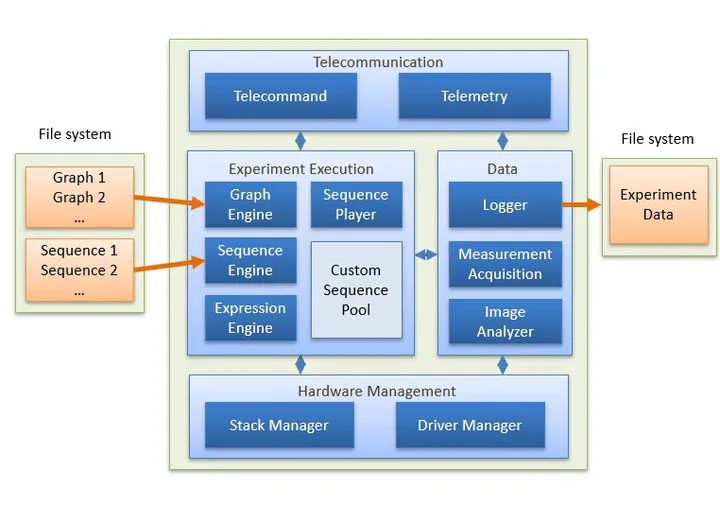The BECCAL Experiment Design and Control Software
Jul 67, 6060·, ,,,,·
0 min read
,,,,·
0 min read
Arnau Prat
Jan Sommer,
Ayush Mani Nepal
Tobias Franz
Hauke Muentinga
Andreas Gerndt
Daniel Luedtke

Abstract
This paper presents the software responsible for the design and execution of the experiments in the Bose-Einstein Condensate and Cold Atom Laboratory (BECCAL)mission, an experiment with ultra-cold and condensed atoms on the International Space Station. The software consists of two parts: the experiment control software and the experiment design tools. The first corresponds to the software running on the payload and is in charge of controlling and executing the experiments, while the latter are the tools used by the scientists to create the experiment definition that will be later uploaded to the instrument to be executed. To overcome the challenge of developing software with such complexity, it was decided to follow a model-driven development approach. Several domain-specific languages (DSLs) have been created to allow scientists to describe their experiments in a domain-specific way. These descriptions are then uploaded and executed by different interpreters onboard. The paper details the architecture of the experiment control software and the different modules that compose it, as well as the developed languages and tools used to describe new experiments. The paper also discusses and evaluates some important aspects of the software, such as how resilient it is to failures, as well as the advantages and disadvantages of the selected approach compared to other approaches used in similar missions. The developed software will also be used for the MAIUS-2/3 missions.
Type
Publication
In 2021 IEEE Aerospace Conference